#Seven Spot Ladybird
Text

7-spot Ladybird Pupa
One of many 7-spot lady bird pupas, anchored to a leaf amongst the bushes, at RSPB Fen Drayton Lakes.
#7 spot ladybird#cambridgeshire#canon#canonuk#coccinella septempunctata#fauna#fen drayton#fen drayton lakes#insect#insects#invertebrate#invertebrates#minibeast#minibeasts#nature#nature reserve#outdoors#pupa#rspb#seven spot ladybird#spring#wildlife
5 notes
·
View notes
Text

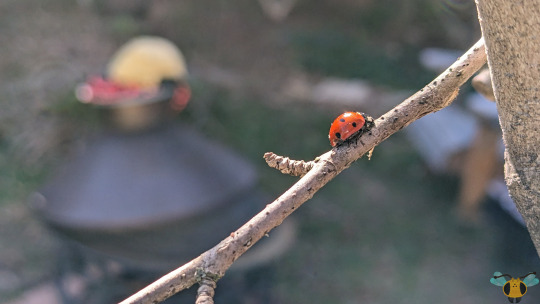

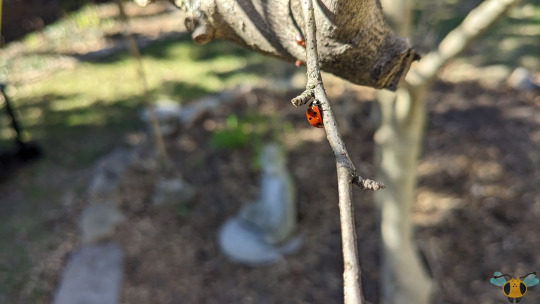


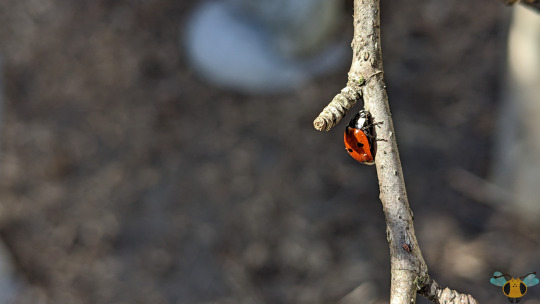
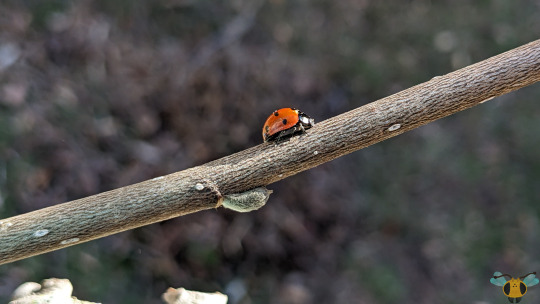

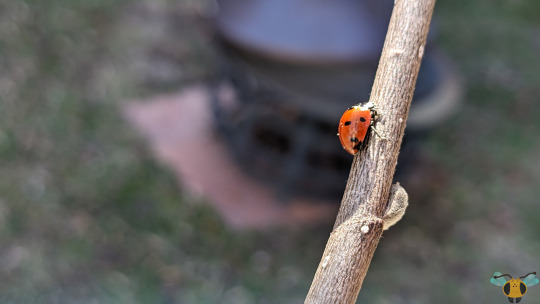
Seven-Spotted Ladybug - Coccinella septempunctata
Spring is starting to take full effect in Toronto. With the warmer weather, the greenery is returning to life, buds are beginning to open and the insects awaken. In particular, I found this small jewel climbing up our white magnolia tree which was on the edge of blooming. Unbeknownst to it, this curious Beetle was actually on a fallen branch that wasn't attached to the tree, but it eventually found its way to more stable ground. No danger of falling of course since Ladybugs are built tough with a strong wingcase and (obviously) they can fly. When a Ladybug is active so early in the spring, it's relying on smaller soft-bodied insects to do the same in order to sustain itself. Moreover, it's also relying on plant-life to be growing in order to sustain those insects. If there's nothing nearby, it fly on to the next area and search The ecosystem can be very complex and this Ladybug is but a small piece of it, but as everything begins to grow again, a Beetle like this can whittle down a few pest insects and ready a summer generation of hungry Aphid-consumers. It's just a small sample of what a new year of insects will bring.
Pictures were taken on April 7, 2024 with a Google Pixel 4.
#jonny’s insect catalogue#ontario insect#beetle#seven spotted ladybug#ladybug#ladybird beetle#coleoptera#insect#toronto#april2024#2024#nature#entomology#invertebrates
13 notes
·
View notes
Text
@oakmonger submitted: I thought you might enjoy this video I took last summer of someone making their home in my porch. I'm in north-eastern uk and I think it's a blue mason bee but may be wrong! Either way they're super cute and I was glad to give them a home.
Also here's a bonus ladybird for you too. They lived their whole life on this plant right outside my window so I got to watch them as a larva and their pupal stage and spent a lovely few days watching them hatch as an adult. This is the first year I had ladybirds hatch in my garden after a lot of work making a suitable habitat for them to live their full life cycle. And this summer their kids will join me too ☺️

Very cute, fuzzy little friend! I'd need to see it better to ID it, though, as I'm not very familiar with your bees over there. I'm so glad you're making your garden a happy place for local inverts! The ladybug is very cute. That one is a seven-spotted ladybug :)
#animals#submission#bugs#insects#video#bee#beetle#ladybug#seven spotted lady beetle#seven spotted ladybug#ladybird
102 notes
·
View notes
Text
nvm diy lithography my next print is going to be an Attempt at a reduction linocut
And it's gonna be a ladybird
#bc i saw a seven spot ladybird the other day i hardly ever see 7-spots compared to harlequins#pointless post
6 notes
·
View notes
Text
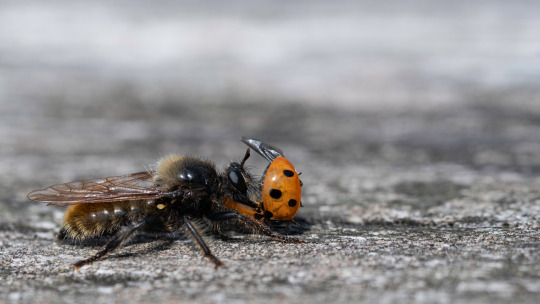
Gul vedrovflue (Laphria flava)
I gang med at fortære en syvplettet mariehøne (Coccinella septempunctata).
Bumblebee Robberfly (Laphria flava)
Feeding on a Seven-spot Ladybird (Coccinella septempunctata).
#Gul vedrovflue#Laphria flava#Laphria#Bumblebee Robberfly#Rovflue#Robberfly#Asilidae#Flue#Fly#Diptera#Insekt#Insect#Syvplettet mariehøne#Seven-spot Ladybird#Coccinella septempunctata#Coccinella#Mariehøne#Ladybird#Coccinellidae#Bill#Beetle#Coleoptera#Sommer#Summer#Bølling Sø
12 notes
·
View notes
Text

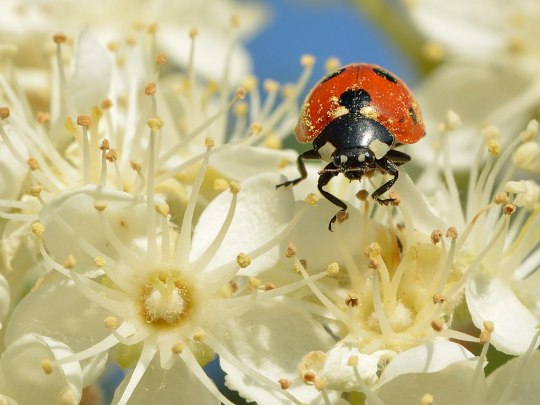
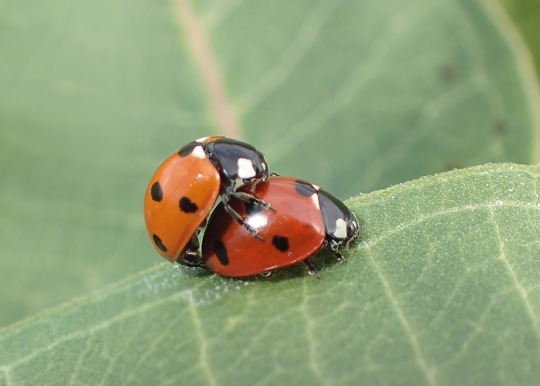


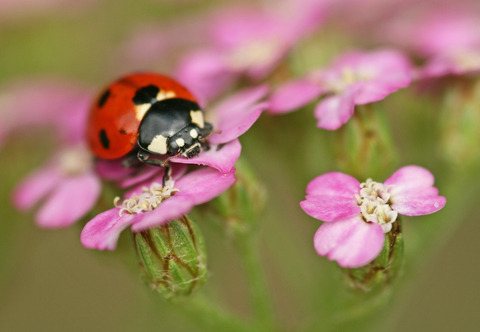

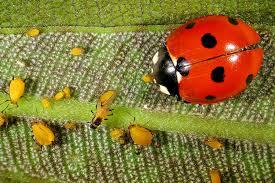

Coccinella septempunctata more commonly known as the seven-spot ladybird, seven-spotted ladybug, or C-7 beetle, is a species of ladybug which was originally endemic to mainland Europe and the middle east but thanks to humans and the spread of agriculture it can now be found all throughout North America, mainland Africa, mainland Asia, Australia, Japan, Indonesia, Madagascar, Cypress, Malta, Sri Lanka, and New Zealand. Here they dwell in a range of habitats including grasslands, meadows, steppe, gardens, forests, parks, marshes, and agricultural fields. Although both seven spot ladybug larvae and adults mainly eat aphids, pollen, and nectar, when aphids are not available these ladybugs are known feed upon other insects such as thrips, white flies, jumping plant lice, leafhoppers, and on the eggs of some beetles and butterflies. Reaching around .3 -.5 inches (7.6- 12.7mm) in length, adult seven-spot ladybirds have round bodies with black heads and abdomens and red thoraxs while the larvae are brownish-grey in colour, with four pairs of bright orange splotches across their bodies. Their distinctive spots and conspicuous colours warn of their toxicity, making them unappealing to predators. The species can secrete a fluid from joints in their legs which gives them a foul taste. A threatened ladybird may both play dead and secrete the unappetizing substance to protect itself. The seven-spot ladybird synthesizes the toxic alkaloids, N-oxide coccinelline and its free base precoccinelline; depending on sex and diet, the spot size and coloration can provide some indication of how toxic the individual insect is to potential predators. Breeding occurs from spring to fall, with seven spots often mating with several partners per day. Females may lay a cluster of 10-30 eggs on aphid-rich vegetation immediately, or, in fall, may store sperm and lay eggs in spring so their larvae have a more robust food supply. Eggs hatch after around 10 days as larvae eat and grow for another 21-30 days before entering the pupal stage, which lasts seven to 15 days. Adults overwinter in a state of diapause (dormancy) in leaf litter, dense vegetation, under tree bark, and in other sheltered spots. Ladybugs are unusual among insects with complete metamorphosis (egg-larva-pupa-adult) because both the larvae and the adults occupy the same spaces and eat the same thing. Under ideal conditions a seven spot ladybug may live upwards of a year.
#pleistocene#pleistocene pride#pliestocene pride#pliestocene#ice age#cenozoic#bug#bugs#ladybug#lady#ladybird#seven spotted ladybug#seven spotted lady beetle#beetle
9 notes
·
View notes
Text
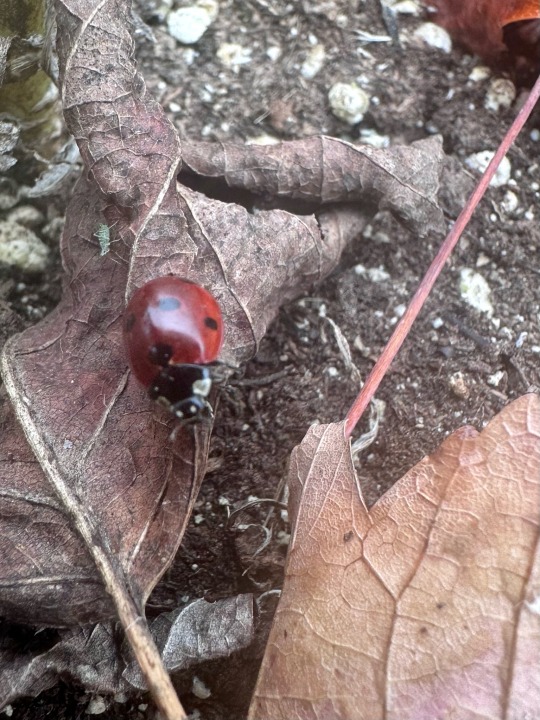

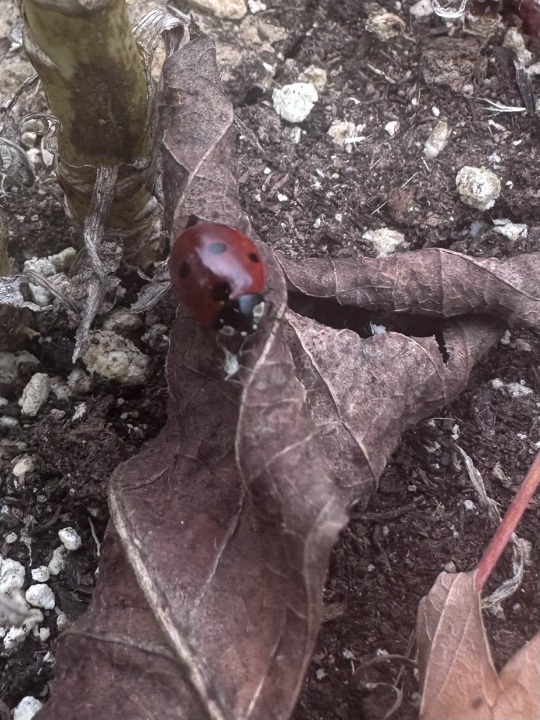
Was cleaning up the garden and found a Seven-Spotted Ladybug. My phone definitely struggles to clearly capture the smaller bugs when they are moving as fast as this guy was but they didn’t turn out too bad
5 notes
·
View notes
Text
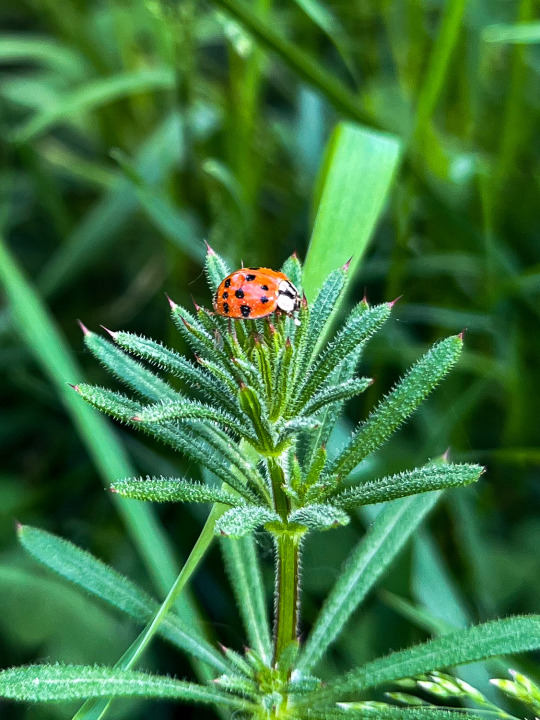
The ladybird beetle (Coccinella septempunctata)
#Coccinella septempunctata#seven-spot ladybird#ladybird#lady bird#bug#beetle#ladybug#ladybug beetle#insect photography#insect#wild animals#polish animal#animal#animal lover#animal photography#animal photoshoot#wildlife#wildlife photography#wildlife pictures#beautiful#beautiful photos#my photo#photography#photooftheday#naturecore#photoart#forest#woods#forest view
5 notes
·
View notes
Photo

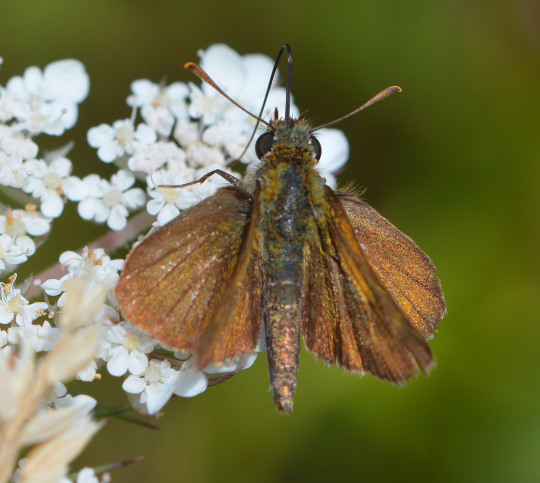



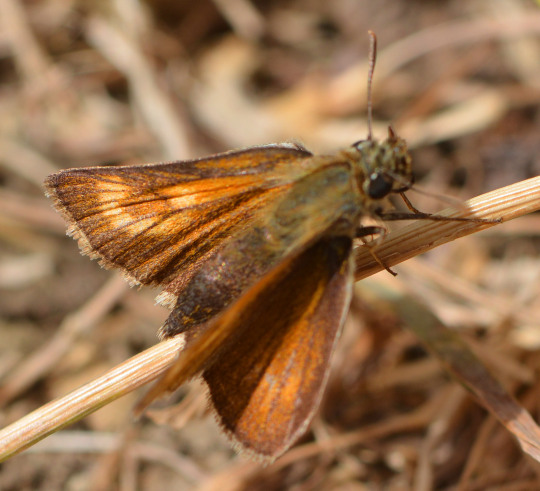




30th July 2022: Durlston: Post 1 of 2: The butterflies, moths and other wildlife
It was time for another of our big day trips that we like to do every year today, visit Durlston to look for Lulworth Skipper butterflies and more. It was a fantastic day out of walking and wildlife watching. We didn’t come in April this year as we usually do as well due to the Pembrokeshire holiday that month taking us to similar habitat and seeing similar species that we target on that April trip the seabirds and others so it was nice to be back. We had two butterfly targets today, the Lulworth Skippers and Wall Brown that we had not yet seen this year. And we saw them both not long after arrival in a precious field we explored quite far up the country park which we hadn’t been in before but had seen Wall Brown flying in from behind the gate in the next field last year. We first saw the exotic Wall Brown flitting along fighting with Gatekeepers at times showing glimpses of its orange colour and settling down nicely seeing its beautiful patterned underwings too which was great. I took the first picture in this photoset of this butterfly. We possibly saw a few more of this butterfly I really admire one of my favourites on a big walk round this afternoon.
In terms of Lulworth Skippers we saw a few dusty looking males in the initial field which was great. The females are the more obvious for this species for me with their distinctive crescent on their wings so it then became about could we see one of them too having got lucky for this last year. We did see one walking round and it’s unmistakable seeing this beacon of light of the crescent on its wings. Then it became a phenomenal afternoon as we saw loads of Lulworth Skippers male and largely female. We saw well into the double figures of them a positive contrast to the handful we have saw doing this trip in 2019, 2020 and 2021 albeit the 2020 trip was in late June in a year many butterflies emerged early so their season may not have really got going at that stage. All three were incredible experiences just to see some of this rare species and today was sensational. It was an honour see these remarkable butterflies so intimately and well today, seeing pairs together, one really flapping its wings and seeing them land and their wings peel open to reveal the crescent on the females was amazing. I really cherished seeing this golden butterfly today and it’s so good to see them doing well here. I took the second, fourth, sixth and seventh pictures in this photoset of Lulworth Skippers here today.
As butterfly species forty two and forty three of my year it takes my butterfly year list current number beyond my 2018 total and level with my 2020 total to be my joint second highest ever butterfly year list behind my 2019 and 2021’s tied total of 45. Of the only five other butterflies seen in my life there’s two I geographically cannot see this year now and we’ll try to see the other three so I could still make this year my highest butterfly year list ever. It’s such a delicate balance to try for that as one missed and it all tumbles if we didn’t succeed in seeing these two species today we would not have necessarily seen them this year especially true for the Lulworth Skippers as its only these parts in Dorset they’re around which makes it even more special to be able to see them so it felt even more precious to see them both today.
It was a circus of other glorious butterflies seen this afternoon with many Gatekeepers, Meadow Browns and Common Blues seen and some beautiful views of dashing Marbled Whites a decent amount still around here different to home where I’ve stopped seeing them pretty much now. There were a fair few Small Heath about too. It was perfect to do a Big Butterfly Count here as I always enjoy doing when we come in the summer.
Moths played a big part in a top trip today too as we spotted a sensational, bright, beautiful and colossal couple of Oak eggars, stunning moths to see one of the best I’ve ever seen and another key new one in an amazing year of moths for me this year I felt so lucky to see it. I also saw my first Silver Y of the year one I have been hoping for I took the tenth and final picture in this photoset of this, my twenty sixth moth species of the year I am proud of how my moth year list is going the second year I’ve been doing them again.
There was a strong cast of other wildlife dominated by insects and other precious little things today; including a Common Green grasshopper that landed on my Mum’s leg and me at one point and was great to see intimately I took the fifth picture in this photoset of this, my first Common Lizard for a couple of years I believe always great to see dashing across the path, a splendid looking hoverfly, a striking Bloody-nosed beetle and possibly a second one too I identified the one in the ninth picture in this photoset as this using the Seek from iNaturalist app, Common Red Soldier beetle, Seven-spot ladybird which the eighth picture in this photoset shows on some wild carrot and Southern Hawker dragonflies with a good showing of bees this afternoon I saw some looking nice on woolly thistle and took a photo of this which I tweeted on Dans_Pictures tonight. I was also spoiled by another brilliant Roe Deer sighting this week with one staring out from a well vegetated back of field. There was another good mammal moment seeing a herd of cattle old and young well including a big bull I took the third picture in this photoset of two cows. My full wildlife sightings summary for today is in my next post about the birds, flowers and landscape today.
#photography#43#butterfly#butterflies#lulworth skipper#wall brown#gatekeeper#oak eggar#seven-spot ladybird#common red soldier beetle#roe deer#cattle#walk#walking#dorset#durlston#england#uk#world#nature#happy#summer#july#meadow brown#common blue#marbled white#small heath#silver y#bloody-nosed beetle#common lizard
4 notes
·
View notes
Photo
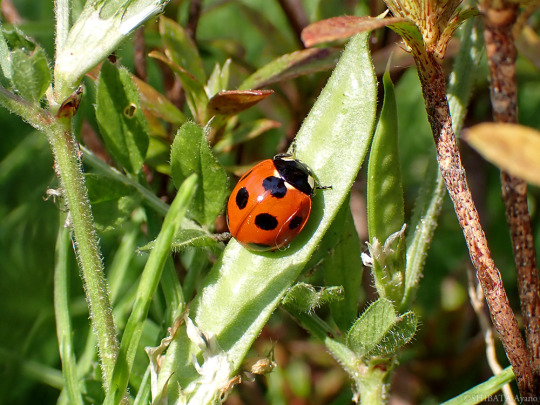
ピカピカのナナホシテントウ
#Coccinella septempunctata#ナナホシテントウ#seven-spot ladybird#Sevenspotted lady beetle#biedronka siedmiokropka#boża krówka#七星瓢蟲#japan
4 notes
·
View notes
Text
Dr Doolittle-style show about a detective who can talk to animals, except instead of talking like people the animals still talk like animals, just translated into English sentences, so the plot of most episodes centres around trying to figure out what the star witness testimony actually means.
Victim's murder was witnessed by her pet snake, whose tank was in the room. Unfortunately pet snake is incapable of describing the world around them except in terms of 'rocks' and 'meat', with their descriptions of individual forms of 'meat' focusing almost entirely on body temperature and smell.
(Solved when it turns out that their description of 'warm-cold meat with rock' was actually an attempt to describe a suspect with a prosthetic limb, which is pretty unnoticeable to a human, but looks dramatically different in infrared.)
Murder at a honey farm. Each witness managed to see about ~0.06% of the full crime, in order to get the full picture, you have to get them to swarm.
Victim was found several days after death, already crawling with maggots. Days into the investigation, protag begins a frantic search to find any surviving maggots/flies that were on the corpse, after realising that how the victim tasted would give vital information about the poison used.
Also there's at least one or two animals who actually do talk in full sentences and in terms humans can understand, and the reason behind this is never fully explained.
All cats in this universe talk in terms of 'mine/not-mine' and mainly focus on territory, mates and food, with the one exception of the main character's cat who is named Watson and knows how to use sarcasm.
All insects speak in one word sentences where everything is 'food', 'enemy' or (for hive insects) 'friend' and 'queen', with the exception of seven-spotted ladybirds specifically, who for some reason speak in full English sentences and are up to date and knowledgeable about world events. The protagonists is as concerned by the full implications of this as you are.
29K notes
·
View notes
Text
Trying to figure out the exact species of the JATGP bugs (and also cool bug facts!)
(Warning: pictures of bugs)
I’m gonna start with ya boi:
Mr. Grasshopper:

First of all, I love him and I wanna be him
Grasshoppers are the only herbivores of the 6 bugs. Uh. Yeah.
Grasshoppers have camouflage! And they can fly just a little bit, but their strong hind legs do most of the work.
Since Mr. Grasshopper is green and British I’m going to infer that he is a Omocestus viridulus, AKA the common green grasshopper

Literally the same guy.
The common green grasshopper is from Britain, and, like the name suggests, common. Very common, in fact. I think they’re like the second most common grasshopper in Britain (most common one isn’t green)
Mrs. Ladybug!
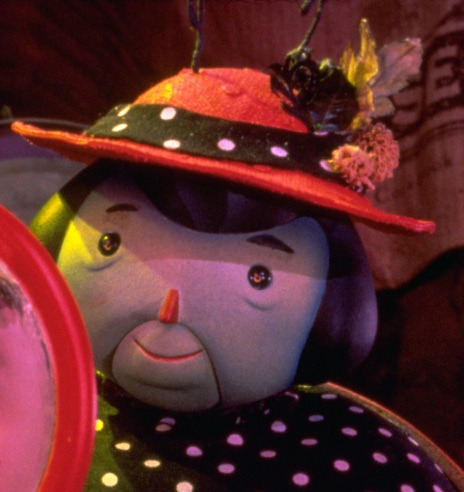
She’s so sweet msmfjrjgjggjjgfjf
FIRST OF ALL, IN BRITAIN LADYBUGS ARE CALLED “LADYBIRDS”
WHICH IS STUPID BECAUSE THEY ARE NOT FUCKING BIRDS
In related news, ladybugs are actually a type of beetle. Sorry for ruining your life.
Ladybugs eat aphids and scale insects (little tiny insects idk) and also pollen and nectar. Not peaches though.
Anyways considering the fact that she is red and has black spots, I’m gonna say she’s probably a Coccinella septempunctata AKA the Seven-Spotted Ladybug. They are just THE ladybugs of all time.

Very cool. Also easy asf. These ladybugs can play dead when threatened and also they are real pretty.
Mr. Centipede:

Silly billy he’s always been my favourite especially in the book he has a goofy little smile
Centipedes are venomous and carnivores. They eat anything they can overpower with their venom. Centipedes are nocturnal, because they dry out VERY easily in the daytime. They usually either don’t have eyes or have shit eyesight. They also have no ears. They “hear” by sensing vibrations in the ground.
This one was a little bit difficult because centipedes don’t vary all that much, but I’m thinking Lithobius forficatus, AKA the garden/brown/stone centipede.
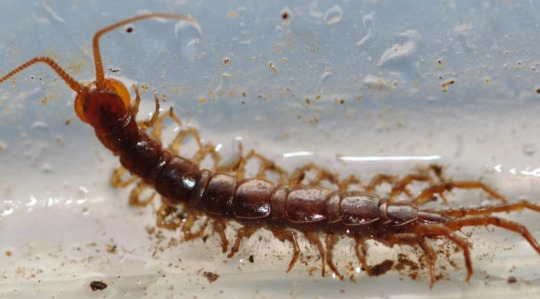
They have many names. They are also very common, especially in North America and the UK. Garden centipedes are born with 7 pairs of legs, and grow legs throughout their life, maxing out at 15 pairs of legs (they always have an odd number of leg pairs) They live under rocks, and if someone lifts those rocks, these centipedes are in luck, because they’re also very good at running. I THINK they have eyes, but if they do, their eyes can only discern light from dark.
Stone centipedes mostly eat flies, springtails, and, uh. Earthworms. But us JATGP Musical fans knew that
Mrs. Spider:
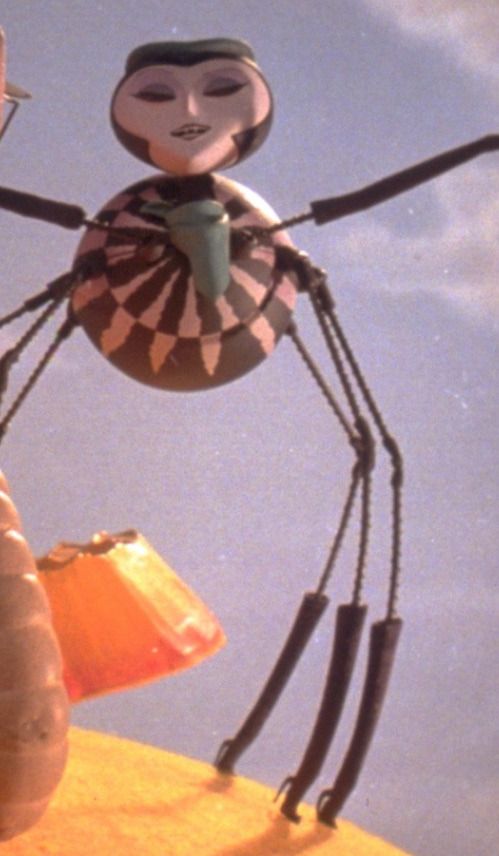
Y’all know spiders I will not explain them. Also I’m scared of spiders so I will NOT show many pictures of them *shudder*
Mrs. Spider could be literally any spider in France. The only spider that’s black with white stripes like this is a zebra spider (Salticus scenicus) and they don’t actually look like her that much. But they’re cute as fuck❤️
I wish I could show you a picture but mobile Tumblr has a maximum of 10 photos per post, but they’re really cute and fluffy.
Anyways, I feel like she’s more likely to be a Steatoda grossa, AKA Cupboard Spider, but they look more scary so I’m not gonna show photos.
But only the males are black and white.
Fuck uhh
Okayy she’s possibly an Araneus nordmanni, AKA Nordmann’s Orbweaver. They’re really scary and I wanna cry but I’ll try to describe them. Black with brown legs, weird white pattern, giant ass. These spiders do exist in France, but they are very rare. (Not just in France, but in general.) They are VERY GOOD at climbing and tend to build webs high on trees (like in a dead peach tree. Maybe with their mate.) They eat insects like gnats, flies, and wasps. Good for them. I’m still terrified.
Also female Araneus nordmanni are apparently the dominant party in the relationship so…
…yeah she’s definitely a Nordman’s Weaver.
Mr. Earthworm:

OH THANK GOD I CAN STOP LOOKING AT SPIDERS AND LOOK AT THESE CUTIE PIE WORMS!!!!
Earthworms are boneless, muscleless, eyeless silly billies. They’re also hermaphrodites (male AND female at the same time) and they can regenerate parts of their bodies (not always so please don’t go around cutting worms in half) They eat fruit, fungi, and anything decaying.
So, I don’t remember the whole movie or the book, but in the musical, Earthworm speaks Spanish sometimes, and his song is vaguely Latin-esque (our director gave him a mariachi jacket for Plump & Juicy. It might not actually be Latin-esque that’s just what I’ve been told if it isn’t then oopsies) so I always thought he was from like Central America, maybe Mexico?
How did a worm get from Mexico to Britain? Guess what: Most earthworms in Mexico are invasive and from other places! Which means it could happen the other way around, but also it means that doesn’t narrow down what species of worm Earthworm is! Fuck!
He’s probably supposed to be a Lumbricus terrestris (The common European Earthworm.)
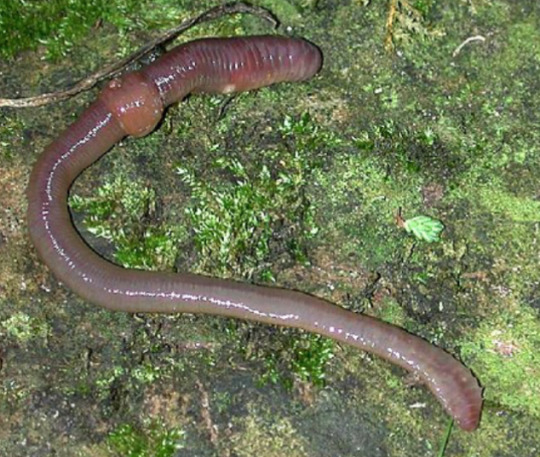
They are the most common worms. Everywhere. But other than species and location, nothing connects this earthworm to THE Earthworm.
So I propose a much funnier idea: That he is some species of Amynthas.

There isn’t enough info about the Amynthas for me to figure out exactly which species of Amynthas he probably is, but look it has a smooth white clitellum like Earthworm!!
So there are 3 reasons why I feel like Earthworm is an Amynthas. 1. Appearance. 2. They are part of the family Megascolecidae, which are the largest family of earthworms (They do say he is a big worm, although that’s probably because he’s literally human-sized)
And 3. These worms are also called Jumping worms. Because they. Uh.
They jump. When they are scared. It’s REALLY funny.
Most Amynthas are from Asia, but somehow a bunch ended up in Mexico. And now I guess one ended up in Britain. And then New York. Invasive species behaviour. (Actually a lot of the JATGP insects are invasive)
Take your pick of worm!
(Also Glowworm is a Lampyris noctiluca, AKA common glow-worm. If you even care. Nobody cares abt Glowworm. How dare you. And James is probably a human boy.)
And that is all thanks guys heart emoji
#james and the giant peach musical#james and the giant peach#insects#cool insects#grasshopper#ladybugs#centipedes#spiders#worms#glowworms#beetles
82 notes
·
View notes
Photo
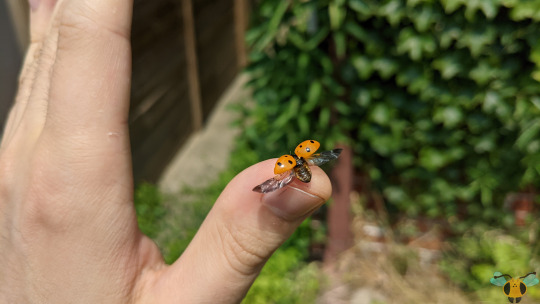

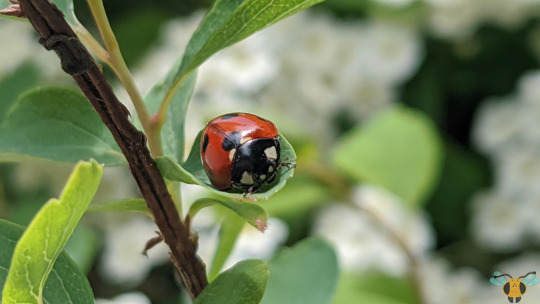
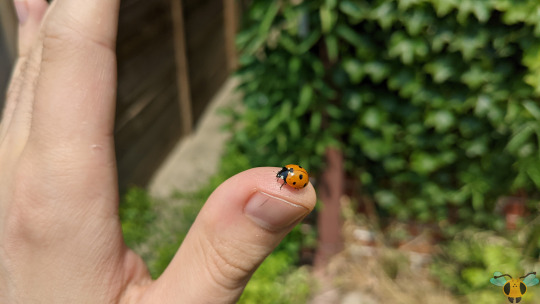






Seven-Spotted Ladybug - Coccinella septempunctata
Let’s give these little spotted gems some love and appreciation. I’ve been a little busy with their smaller and more unknown relatives, but now it’s their turn for the spotlight. There’s been quite a few Seven-Spotted Ladybugs throughout the years, so I’ve found them on many a plant. Large-sized as far as Ladybugs go, they’re easy to spot walking on plants or flying through the air. Don’t swoop down on them if you plan to pick them up; you can coax them onto your hand if you place your fingers nearby or if they land on your clothing. Similar to the Asian Ladybug (or Ladybugs in general for the matter), if frightened or agitated they will emit their smelly and noxious-tasting hemolymph defense to try and escape. Also like Asian Ladybugs, looks like that Seven-Spotted Ladybugs appear red or orange! Keep your palm open and don’t let them feel trapped and the worst they’ll do is draw their legs under their shell to protect them. In my experience they’ll roam on your hand for sometime before eventually flying away or suddenly dropping into the grass below. It’s just what they do to escape the occasional spell of danger since they’re used to feasting on soft-bodied insects with little difficulty...unless Ants are on patrol of course.
I’ve mentioned in posts with other insects that Ants like to tend to honeydew producing insects, offering protection in exchange for that delicious liquid. Now, if honeydew is so tantalizing, couldn’t Ladybug larvae or adults just eat the honeydew? To answer, kind of. The larvae need protein and carbohydrates to grow and molt to their adult forms. so soft-bodied insects are the priority (unless it’s Ladybug that only eats plants such as those of the Epilachna genus). Plus, they get honeydew when they eat the insects anyway. It’s a win-win! Since the adult Beetles can unfold their wings and fly around, they can be more open to other food sources such as honeydew, fruits, pollen and even fungi, depending on the specie. Soft-bodied insects are still best, but there are nutrients from the aforementioned sources that are also beneficial to a Ladybug’s overall health. Looking into it further, nutritional content of soft-bodied insects may vary due to which plant(s) they feed on. These extra food sources have also shown to be especially valued when prey items become more scarce. If only I’d thought to pay closer attention to the individual photographed in September. These diligent creatures need to do everything they can to stay healthy if it means surviving an overwinter or migrating.
Pictures were taken on June 2 and 27; July 12; September 21, 2020 and June 13, 2021 with a Google Pixel 4.
#jonny’s insect catalogue#ontario insect#beetle#seven spotted ladybug#ladybug#coleoptera#insect#toronto#june2020#july2020#september2020#2020#june2021#2021#entomology#nature#ladybird beetle#invertebrates
34 notes
·
View notes
Photo
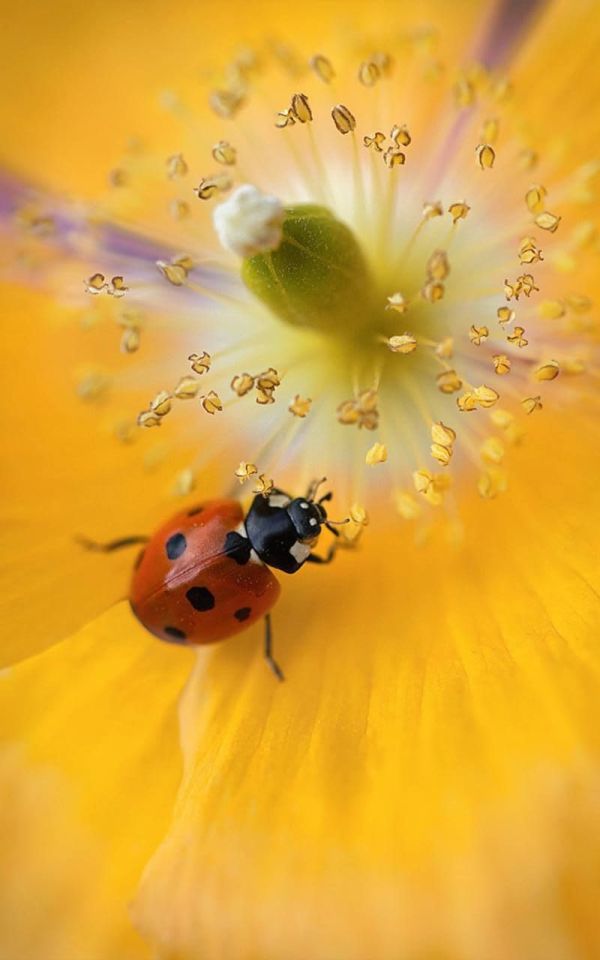
(via Pinterest)
Seven-spot Ladybird (Coccinella septempunctata)
67 notes
·
View notes
Text
Found a ladybird on the floor at work so I scooped it up as gently as I could. They can bite (their teeth can't penetrate our skin but that's not the point) but I was more worried about harming it somehow. Several coworkers, who saw me cupping my hands together said, "oh, what is it this time, Erika?"
And every time I said it was a ladybird, they'd be coming over to have a look and call it cute because it had seven spots and we were all 🥹🥹🥹 over it.
Spent five minutes outside carefully choosing a flower to put it down on (it was sluggish so I wanted to put it down on something it could eat, since this is the time of year they start to hibernate) and when I came back in, all I could think was,
"yeah... humans are good.🥰"
16 notes
·
View notes
Text

Seven-spot Ladybird larvae, Coccinella septempunctata Canon 400D EF 100 2.8 f/9 1/ 80 iso:200 5/31/2008 Srbsko, Czech Republic
#Coleoptera#Coccinellidae#Beetles#AmazingBeetles#Ladybirds#Ladybugs#insects#invertebrates#macro#insectphotography#macrophotography#insect#canon
15 notes
·
View notes